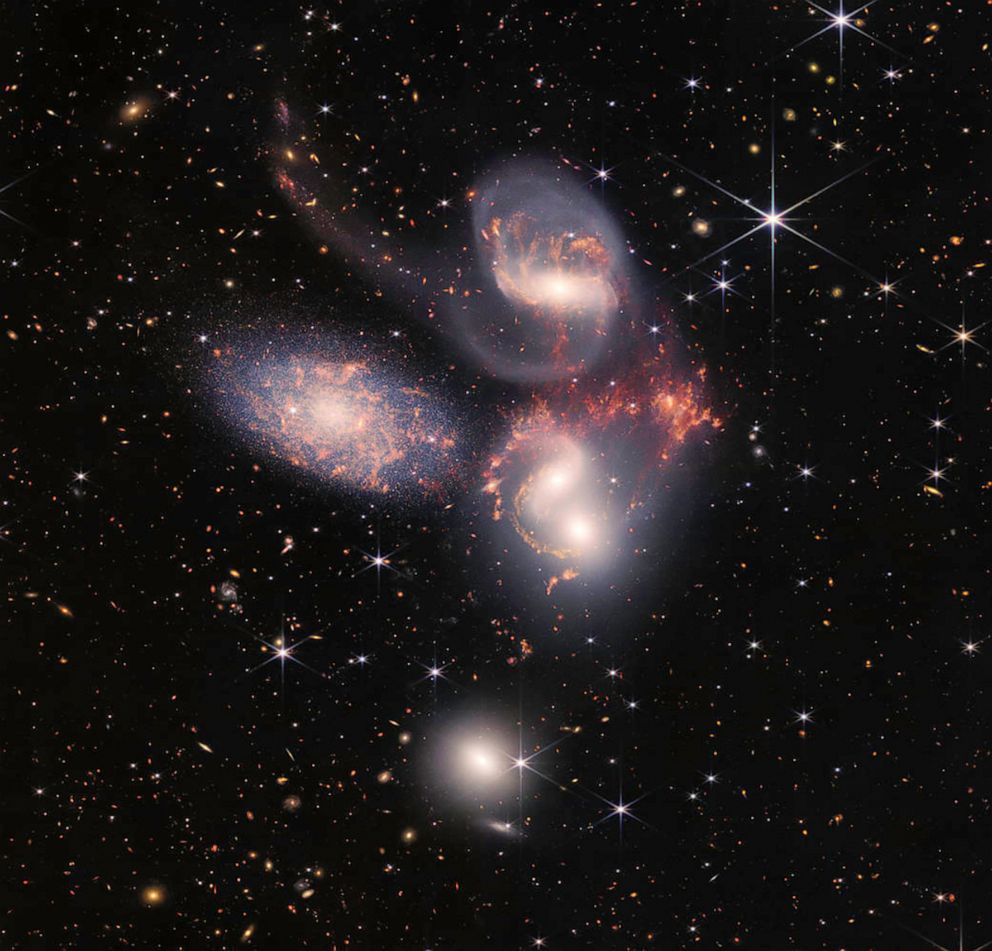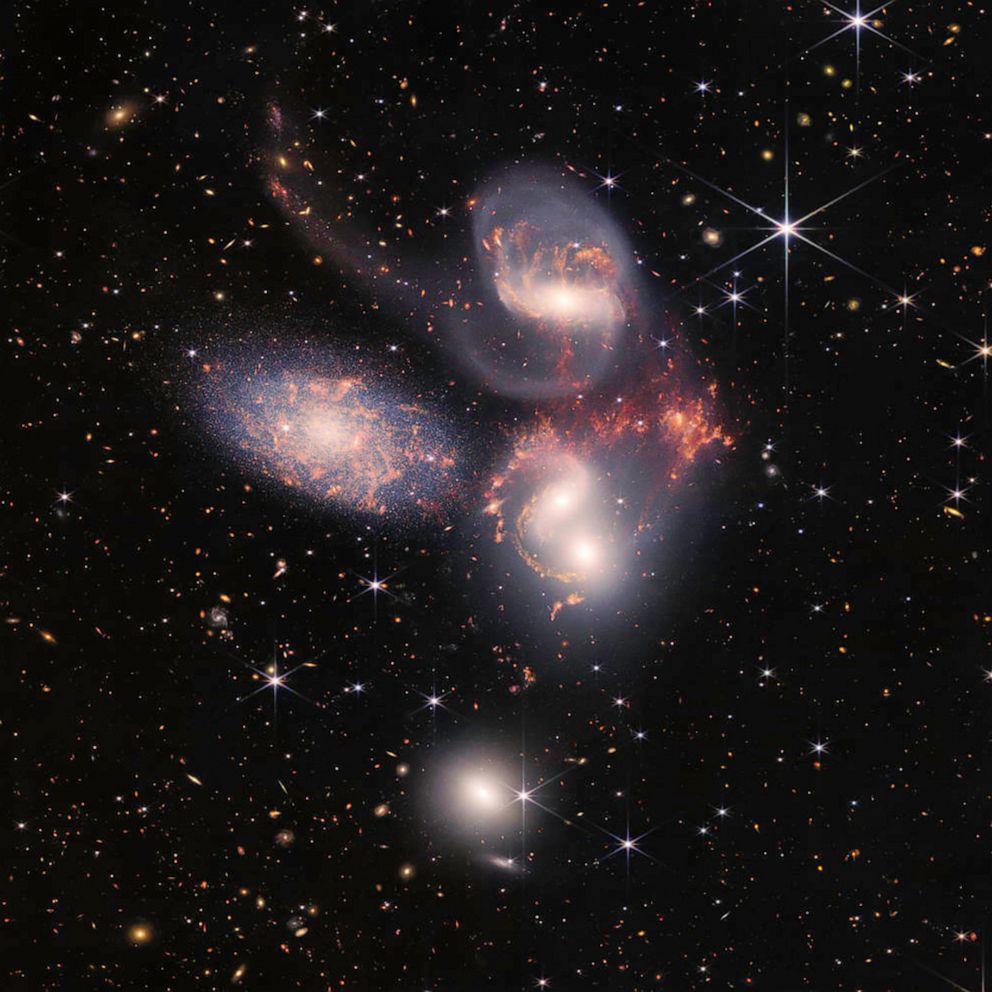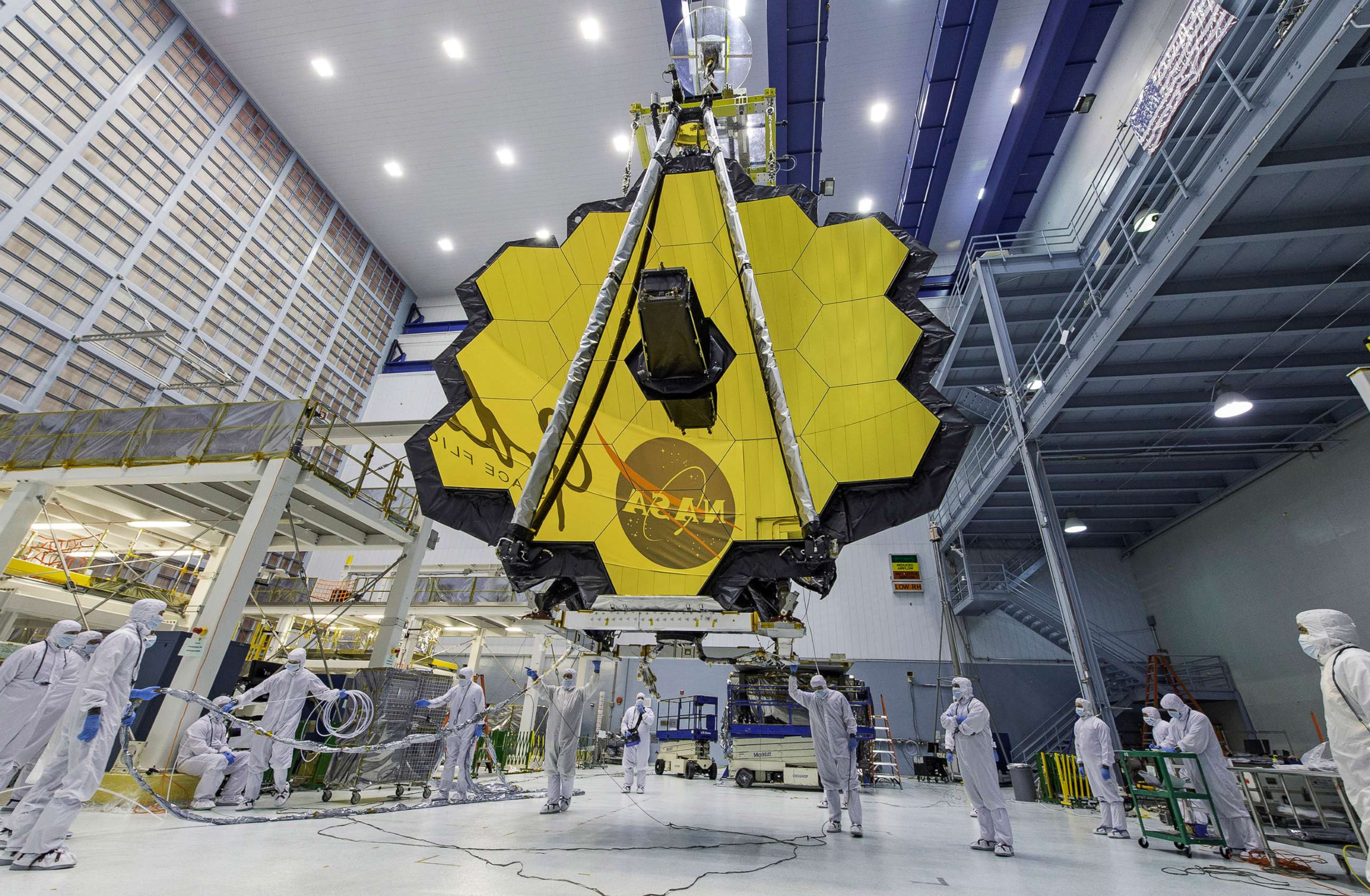NASA releases sharpest images of universe ever taken - why does it matter?
Besides being breathtaking, what do these images mean for us?
NASA released the first full-color images from the James Webb Space Telescope on Monday, images the space agency says are the deepest and highest resolution ever taken of the universe.
The images capture dying stars, nebulas, colliding galaxies and more. Besides being breathtaking, what do these images mean?
The James Webb Space Telescope, NASA’s biggest, most expensive and powerful telescope to date, was launched in December 2021 with the intention of spending five to 10 years studying a plethora of things, including the formation of the universe’s earliest galaxies and the developments of our own solar system.

Nadia Drake writes about space for National Geographic. She spoke with ABC News’ “Start Here” podcast on Wednesday about what these images mean and what they say about human development closer to home.
START HERE: Nadia, what kind of words would you use to describe these photos?
DRAKE: Oh, my gosh. Well, so we saw the first of these images on Monday night, and that was the deepest ever image in the infrared taken of our universe. We're looking so far back in time. Some of the light in that image has traveled for 13.1 billion years before it reached the camera.
And that to me is just magnificent, right? That's one of the words I would use is “magnificent, awe-inspiring.”
They make me contemplate what we know about reality, what we understand about it, because it's not often that you get to see the universe in a new light through a new set of eyes.
That doesn't happen very often and so each time you get that fresh glimpse of the cosmos where an instrument is revealing truths that you didn't even know to ask about. I feel like it's just transcendent.
START HERE: And what are we looking at? What are these pictures that we saw yesterday?
DRAKE: There were four other data products that were released.
One is a spectrum of an exoplanet atmosphere. And so in that spectrum, which is basically telling us what some of the atmospheric composition of that planet is, we learned that there's a lot of water vapor and that there is a surprising amount of clouds and haze. And this is a planet that orbits its star in about three or so days. It's about half the mass of Jupiter. So it's not the type of world that we see in our own solar system.
And then there are three more images.
One is of a nebula that's blown by a dying star. So this one looks kind of like an eyeball. It looks like a ring that's surrounding a star that has reached the end of its life.

And so for me, it's kind of poignant because as the star was dying, it was actually exhaling all of this matter into the cosmos. This dust and gas and these elements that are going to seed planet formation or star formation, it's kind of nourishing the cosmos as it's dying.
And then there's another nebula which looks at the opposite side of the stellar life cycle, which is Star Birth. And this is the Carina Nebula. And it's this region of space that looks so much like a landscape. It's almost mind blowing. You look at it and it looks like you're seeing terrestrial formations, cliffs, gullies. Things that you would imagine seeing on Earth. But they're actually not. It's space, these are cosmic ingredients. And instead of seeing things like trees dappling the landscape, you're seeing new stars that are in the process of being born.
And so it's the stellar nursery that's just so chaotic and energetic and beautiful.
So over the next year of observations which are planned, the telescope will be looking at additional exoplanets, which are worlds that are orbiting faraway stars, also looking at their atmospheric composition, trying to figure out what's in those atmospheres.
And maybe, maybe it's a longshot, but maybe some of those molecules could be signs of life.
START HERE: But wait, is there life out there? Have you gotten a sense from all of this, whether there is a high likelihood, that there's got to be life beyond?
DRAKE: So I have to preface my answer to this question with: I'm fairly biased.
My dad is the scientist who came up with the Drake Equation, which is a thought experiment that lets you calculate the number of detectable, intelligent civilizations in the Milky Way galaxy. So I've spent most of my life thinking about the fact that we are not alone on this planet.
Like math says, it's got to be out there somewhere. Math says it's got to be out there.
And as I've been in this job, it just makes more and more sense to me that we are not alone.

I think there is definitely other life out there, certainly microbial. We can argue about technology and civilizations, but it just seems improbable for us to be alone.
It will also be looking at some of the earliest galaxies that formed. It will be looking at regions of star formation like we saw in the Carina Nebula, but also regions that are fueled by colliding galaxies.
START HERE: Colliding galaxies.
DRAKE: Colliding galaxies.
START HERE: So dramatic, space.
DRAKE: So dramatic and so actually the last image that was unveiled yesterday was of a quintet of galaxies, two of which are in the act of colliding.
And as [the galaxies] are doing so, they're actually fueling star formation.
It's all just very circular. You think about life and death in the cosmos. And one of the most beautiful comments I heard from a scientist was that: “The story of us, the story of humans is actually written in the stars.”
You can't really understand life on Earth without understanding the origin of stars and galaxies and the chemical elements that create life as we know it.
And so I think that's what this telescope is going to help us do, is connect those dots. How do you get from those very first stars to a planet Earth where you have us?
START HERE: Fascinating images, fascinating story behind it. Nadia Drake from Nat Geo, thank you so much.




